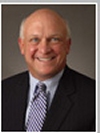Source: Stefan Swanepoel
Each generation is unique – they react differently to and change what previous generations have done over time. With this understanding in mind, I find it valuable to not only appreciate where our own generation, and those generations before us, has come from, but also what to expect and how to work with the coming generations. Each generation approaches challenges differently and as a result, solutions are obtained differently. That is not to say that one solution is better than another, it is just to make note that if a generation younger than you, for example Generation Y or Z, (your future clients) has a problem – such as finding the right house – how are you going to help them? Will you solve their problem in the way they would expect you to solve it, and not in the way you would naturally solve it?
Each generation tends to favor a different a method of communication. For the Silent Generation it may have been hand-written letters or telephone calls. For Boomers, it may be pagers or cell phones. For Gen X it may be email or Social Media, and for Gen Y it may be text messaging. Each identifies a dominant vehicle. Therefore, reaching out to each generation often requires communication via their preferred platform, for example:
 A Gen Y couple is looking to purchase a new home. Having had access to the Internet most of their lives, they decide to do research prior to connecting with an agent. After coming up with possible neighborhood choices, the couple opts for additional research by viewing YouTube videos and online virtual tours of homes for sale. Finding a few homes they like, they send a text message to three agents that have received good online ratings and reviews with an inquiry and contact details.
A Gen Y couple is looking to purchase a new home. Having had access to the Internet most of their lives, they decide to do research prior to connecting with an agent. After coming up with possible neighborhood choices, the couple opts for additional research by viewing YouTube videos and online virtual tours of homes for sale. Finding a few homes they like, they send a text message to three agents that have received good online ratings and reviews with an inquiry and contact details.
The first agent, a Boomer who prefers the telephone for communication, receives the text, but treats it like a phone call. The agent calls the couple a few hours later only to get voicemail, and in turn leaves a voice message.
The second agent, a Gen X’er and savvier than the first agent, prefers to use email. The agent sees the text message, uses Outlook and sends the couple an email template together with various attachments providing more information about the area within a few minutes.
The third agent, a Gen Y’er who understands the immediacy of texting, replies within a few seconds with a short cryptic message indicating they’re currently with a client, and points the couple to an interactive web page with the information they need.
Get the drift? What is your “digital body language?” Does your business cater to all generations? Check out the video down below to help illustrate the point. I have also included interesting facts regarding each generation below.
A List of Generations
Here is a breakdown of the births for the last century, its shows you the size of each generation. The Baby Boomers are the largest, with a total of 78 million in the yellow. Second place goes to Generation Y with roughly 73 million. After the graph we have some descriptions for each generation.
The G.I. Generation (1901-1924) – is the generation that includes the veterans who fought in World War II and who came of age during the Great Depression.
The Silent Generation (1925-1945) – born notably during the Great Depression (1929–1939) and World War II (1939–1945), The Silent Generation was raised to expect and ask for little. As such, this generation more readily accepts fate and hard work.
Baby Boomers (1946-1964) – are widely associated with privilege, as many grew up in a time of affluence. Collectively, Boomers are the healthiest, and wealthiest generation to date.
Generation X (1965-1976) – Growing up in a historical span of relative geopolitical peace for the US, this generation saw the inception of the home computer, the rise of video games, cable television and the Internet as a tool for social and commercial purposes.
Generation Y (1977-1994) – With the rise of instant communication technologies (email, texting, and IM) and social outlets (Facebook, Twitter, YouTube) Gen Y has reputation for being somewhat peer-oriented and often finds comfort in virtual cyber-worlds.
Generation Z (1995-current) – Born after the fall of the Soviet Union and the dawn of the World Wide Web, Generation Z is considered to be Internet ready (requiring permanent access to the Internet) and device agnostic (not limited to the home computer or any particular device). Unlike previous generations, Gen Z focuses on being entirely individualistic, partially as a result having been raised with online social networks and Internet freedom.
When you take a look at the video below, think about our perceptions in the different age groups, much like we have just discussed.
About the Author
During the last fourteen years, nineteen-time author Stefan Swanepoel has widely become regarded as the leading researcher on the business and technology trends impacting the real estate industry. For more information on his annual Swanepoel TRENDS Report and the annual Swanepoel SOCIAL MEDIA Report visit www.RETrends.com.














